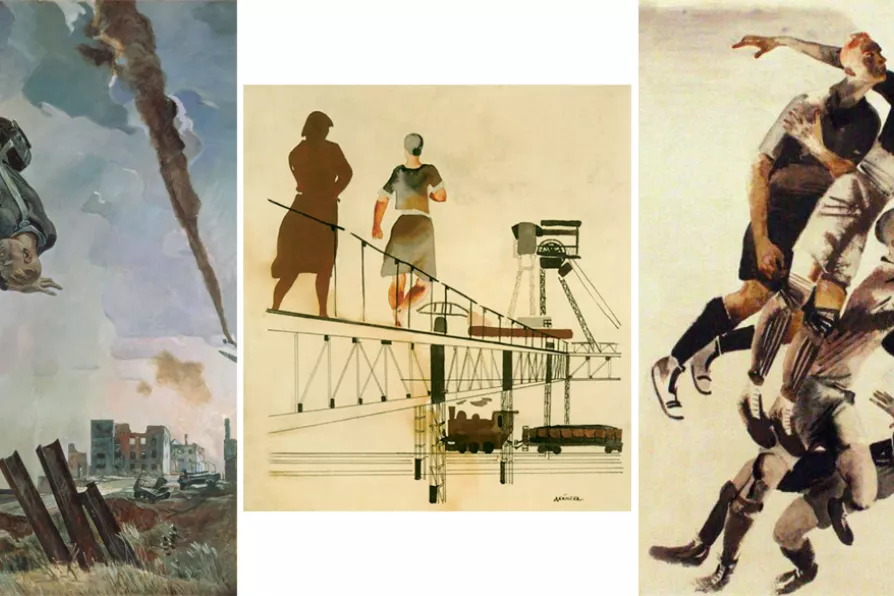The bard pays homage to his two muses: his wife and his football club
The golden boy of Soviet art
Alexander Deyneka's dynamic response to the Bolshevik revolution shines through his work, says CHRISTINE LINDEY

 (L to R) Ace [fighter pilot] shot down, 1943; In the Donbass, 1925; Football, drawing for Red Niva magazine, 1927
(L to R) Ace [fighter pilot] shot down, 1943; In the Donbass, 1925; Football, drawing for Red Niva magazine, 1927
IN 1917 Alexander Alexandrovich Deyneka (1899-1969) was just 18 and studying in his native Kursk when the upheavals and excitement of the Bolshevik revolution began.
He soon travelled to Moscow to study at the now celebrated Vkhutemas (arts and crafts workshops) and in this cauldron of aesthetic and political debates he honed his Marxist aspiration to create a new Soviet art.
Deyneka joined Vladimir Favorsky’s graphics and printmaking department, where he learned to respect art theory and to construct his compositions in terms of plane and space.
Similar stories

NICK WRIGHT delicately unpicks the eloquent writings on art of an intellectual pessimist who wears his Marxism lightly

JAN WOOLF wallows in the historical mulch of post WW2 West Germany, and the resistant, challenging sense made of it by Anselm Kiefer

CAROLINE FOWLER explains how the slave trade helped establish the ‘golden age’ of Dutch painting and where to find its hidden traces

CHRISTINE LINDEY welcomes a fascinating survey of the work of the communist and socialist artists who founded the AIA in the 1930s










